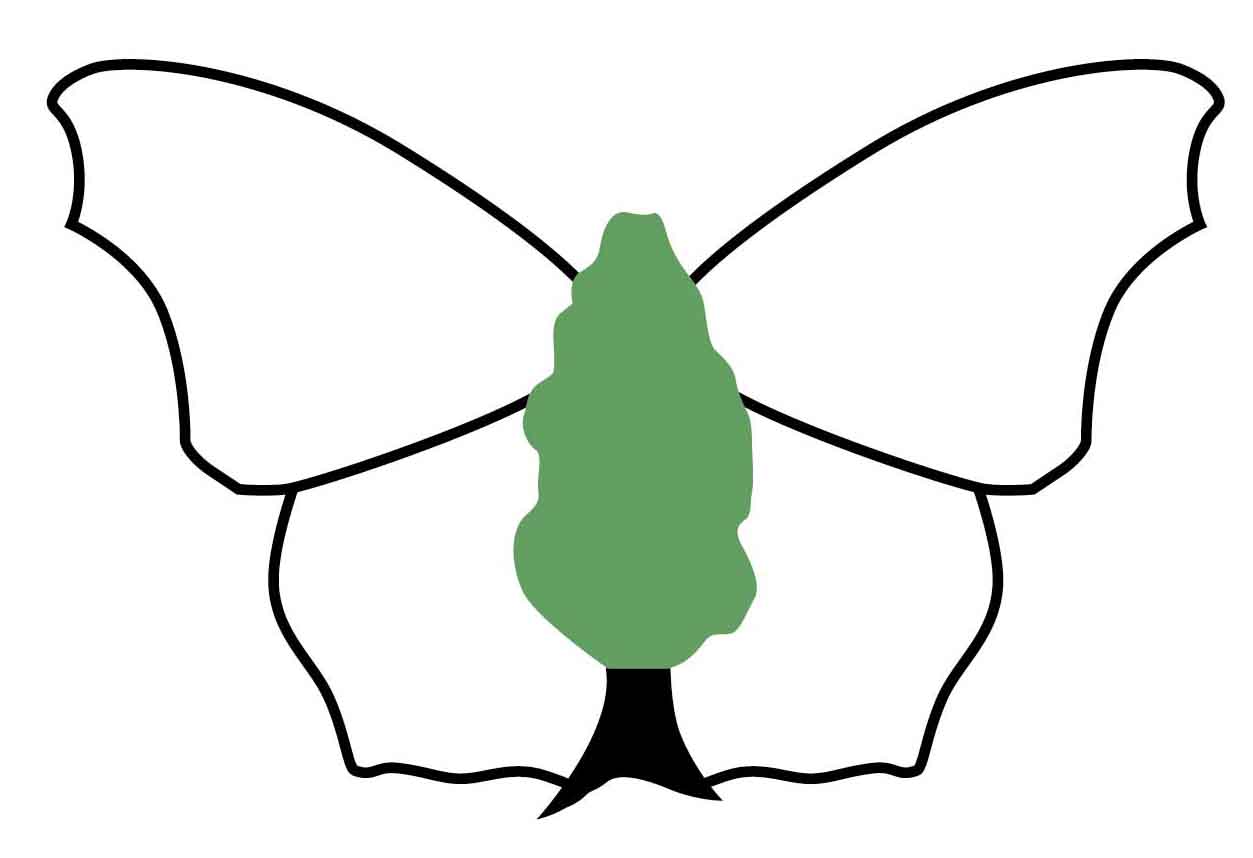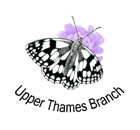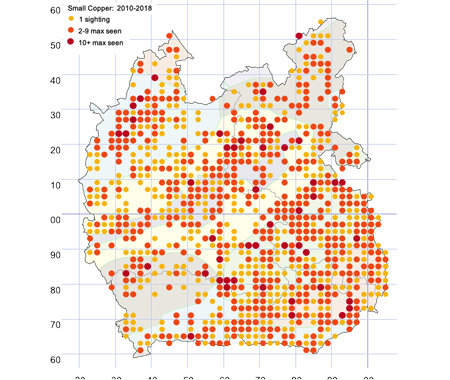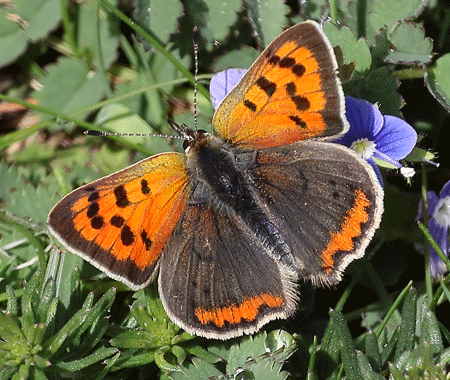 | Butterfly Conservation Saving butterflies, moths and our environment | Upper Thames Branch |  |
Small Copper (Lycaena phlaeas) | ||||||||||||||||||
| Description | ||||||||||||||||||
| Wing span: 27-36 mm. This is the only butterfly in Britain with coppery-orange wings, and as such is unmistakable. The size and position of the black forewing spots is quite variable. The sexes are similar. It is found widely throughout the British Isles. It is found in a wide variety of habitats but it favours warm, dry sites such as downland, heathland, coastal dunes and shingle. It can also be seen in parks and gardens. | ||||||||||||||||||
| Images (click to enlarge) | ||||||||||||||||||
| ||||||||||||||||||
| Life Cycle | ||||||||||||||||||
| There are typically 2 or 3 generations each year, depending on the weather. The first adults emerge in May. The next generation emerges at the end of July, or beginning of August. Adults may also appear in September, depending on location. The species over-winters as a larva. | ||||||||||||||||||
| Larval Foodplants | ||||||||||||||||||
| The main larval food plants are Common Sorrel (Rumex acetosa) and Sheep's Sorrel (Rumex acetosella). | ||||||||||||||||||
| Nectar Sources | ||||||||||||||||||
| Favourite nectar sources are Fleabane and Ragwort. | ||||||||||||||||||
| UK Conservation Status | ||||||||||||||||||
| Least Concern | ||||||||||||||||||
| Earliest UTB first sighting (since 2004) : 3rd April | ||||||||||||||||||
| Mean UTB first sighting (since 2004) : 23rd April | ||||||||||||||||||
| Distribution and Sites | ||||||||||||||||||
 Key |
| |||||||||||||||||
| Related Species | ||||||||||||||||||
| ||||||||||||||||||
Copyright © Butterfly Conservation Upper Thames Branch 2025
Privacy and Copyright Statement
Butterfly Conservation : Company limited by guarantee, registered in England (2206468)
Registered Office: Manor Yard, East Lulworth, Wareham, Dorset, BH20 5QP, Tel: 01929 400 209
Charity registered in England & Wales (254937) and in Scotland (SCO39268)
Privacy and Copyright Statement
Butterfly Conservation : Company limited by guarantee, registered in England (2206468)
Registered Office: Manor Yard, East Lulworth, Wareham, Dorset, BH20 5QP, Tel: 01929 400 209
Charity registered in England & Wales (254937) and in Scotland (SCO39268)




